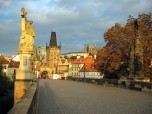Mustang or Mun Tan means fertile plain. It is the former Kingdom of Lo, the place measures roughly 80 kilometers ling (north-south) and 45 kilometers at its widest. It is at an elevation of roughly over 2500m. Mustang is also called as Tibet. Mustang Kingdom survived the Chinese invasion back in 1951 and hence it was able to foster its original Tibetan Culture.
Currently, Mustang is politically part of Nepal. Mustang people do animal husbandry and trade as their source of income. The region is very accessible from Himalayas. Because of its strategic location, it has gone through many wars and sometimes even serves as a battle field. Various culture and religion practices and beliefs thrived in Mustang. The place is largely dry and arid due to its geographical location.
The people in Mustang Kingdom either belong to the Thakalis or Tibetan origin. Most people lived near the river. The site is roughly 2-3,000m above sea level but for tough conditions they are force to vacate and transfer to a lower region of Nepal. The kingdom opened its gate to the world in 1970s.
Even though foreigners have been currently allowed to enter the kingdom since 1991, tourism to the upper Mustang is still regulated. Foreigners need to secure a specific or special permit to enter the kingdom. It roughly costs five hundred U.S dollars for a person to stay in Mustang for ten days.
Mustang Kingdom was once a very independent kingdom. Language and culture are closely similar to the Tibet’s. Back in fifteenth century to seventeenth century, due to its strategic location, Mustang had an advantage to control trade between Himalayas and India. By the end of eighteenth century, the kingdom was controlled by Nepal already.
Back in 2007, a shepherd in Mustang discovered a collection of 55 cave paintings depicting the life of Buddha.















































